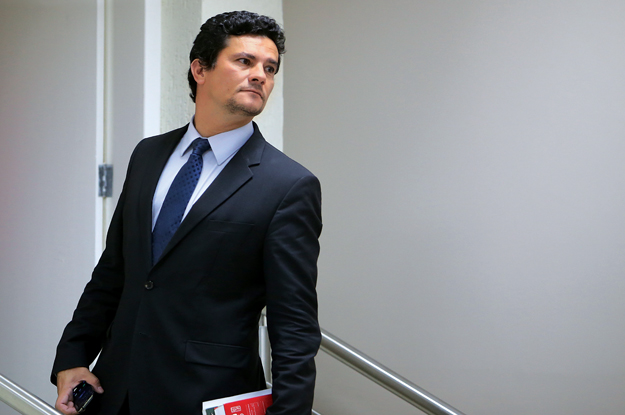This article is adapted from our 1st print issue of 2016. For an overview of our Top 5 Corruption Busters, click here.
“Brazilian of the Year.” “Personality of the Year.” One of Brazil’s “Most Influential People.”
Sérgio Moro is a star, and it’s no mystery why. The young Brazilian judge pried the lid off a far-reaching graft scheme that had siphoned more than $3 billion from the state-run oil firm into the wallets of high-profile officials and political parties, leading to the arrests of dozens of business executives and top politicians previously considered untouchable.
But it would be mistaken to consider Moro the savior of Brazil. Rather, his string of ground-shaking legal victories should be seen as part of a slow, painful process of democratic reform that began two decades ago when Brazil was emerging from a military dictatorship and laying the institutional groundwork for civilian oversight — a reform process that has finally seeped into Brazilian culture and started producing people like Moro himself.
“Cultural change progresses more slowly than institutional change,” Brazil’s former President Fernando Henrique Cardoso has observed. “And we have a culture that is not exactly democratic yet; it is still tolerant of corporatism, privileges and clientelism.”
Cardoso would know. As president from 1995 to 2002, he created the Controladoria-Geral da União to serve as an ombudsman within the federal government. This led to the creation of a public prosecutor — a figure that would prove a key aid to Moro during his investigations two decades later.
Anticorruption reforms continued under Cardoso’s successor, President Luiz Inácio Lula da Silva, who took steps to improve the judiciary, increased the role of civil society in government, and incentivized the federal police to reduce internal corruption.
Global context mattered. To comply with treaty commitments, Brazil was compelled in 2003 to pass an antilaundering strategy, which in turn forced the central bank to set up a financial crime unit that led to an asset recovery committee, a national registry of bank accounts, and some integration of existing criminal justice databases.
So by the time he got whiff in 2014 of the scandal that would become known as the Lava Jato (Car Wash), Moro already had access to a deep chest of legal tools; it just took someone with his mix of creativity, intellect and meticulousness to use them to their full potential.
A federal judge since age 24, he had trained abroad at Harvard University and the U.S. State Department, and cut his teeth as chief investigator in two major corruption scandals involving financial crimes and money laundering.
Now in his early 40s, Moro was ready for his biggest assignment yet — but he also knew he couldn’t do it alone. He assembled a crack team of young, energetic judges and prosecutors who, like him, had the experience and skill to navigate Brazil’s byzantine legal system. Within months, they’d secured a staggering array of early wins that would reverberate for years to come.
But for all their talent, Moro and his team are facing mounting criticism. A growing number of legal experts claim they are sending suspects to prison on thin evidence with an eye toward extracting plea bargains, which in turn keep the Lava Jato scandal rolling. If this critique spreads, the team that is now knighted by the media as the “Nine Horsemen of the Apocalypse” might see its work challenged in the courts. Whatever the outcome, though, Moro’s shake-up has been unquestionably positive.
Brazil, which still ranks woefully low in indexes of transparency and use of public funds, could do with many more like him.
—
Spektor is an associate professor of international relations at Fundação Getulio Vargas in Brazil and a columnist at Folha de São Paulo, a leading newspaper.





